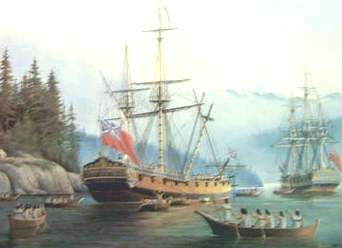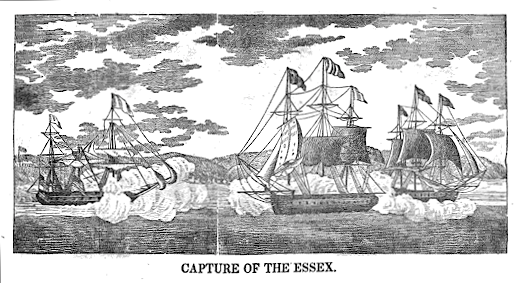|
Simoom Sound
Simoom Sound is a sound on the Central Coast of British Columbia, Canada, located on the east and north sides of the Wishart Peninsula between Tribune Channel and Kingcome Inlet. The former steamer landing, now classified as a "locality", and the post office of Simoom Sound, British Columbia, located in Echo Bay on Gilford Island, is named after the sound. Kawages Indian Reserve No. 4 is located on the north side of Simoom Sound and is a reserve of the Dzawada'enuxw First Nation of the Kwakwaka'wakw peoples. Name origin The sound is named for HMS ''Simoom'', 8 guns, Royal Navy troopship commanded by Captain John Kingcome, namesake of Kingcome Inlet and Rear Admiral of the Pacific Station 1863-1864 when the sound was named. History Captain George Vancouver anchored in Simoom Sound in his vessels the ''Discovery Discovery may refer to: * Discovery (observation), observing or finding something unknown * Discovery (fiction), a character's learning something unknown * Discove ... [...More Info...] [...Related Items...] OR: [Wikipedia] [Google] [Baidu] |
Sound (geography)
In geography, a sound is a smaller body of water typically connected to a larger sea or ocean. There is little consistency in the use of "sound" in English-language place names. It can refer to an inlet, deeper than a bight and wider than a fjord, or a narrow sea or ocean channel between two bodies of land (similar to a strait), or it can refer to the lagoon located between a barrier island and the mainland. Overview A sound is often formed by the seas flooding a river valley. This produces a long inlet where the sloping valley hillsides descend to sea-level and continue beneath the water to form a sloping sea floor. The Marlborough Sounds in New Zealand are good examples of this type of formation. Sometimes a sound is produced by a glacier carving out a valley on a coast then receding, or the sea invading a glacier valley. The glacier produces a sound that often has steep, near vertical sides that extend deep underwater. The sea floor is often flat and deeper at ... [...More Info...] [...Related Items...] OR: [Wikipedia] [Google] [Baidu] |
HMS Chatham (1788)
HMS ''Chatham'' was a Royal Navy survey brig that accompanied HMS ''Discovery'' on George Vancouver's exploration of the West Coast of North America in his 1791–1795 expedition. ''Chatham'' was built by King, of Dover and launched in early 1788. She was purchased for navy service on 12 February 1788. The Vancouver Expedition ''Chatham'' first significant voyage was Vancouver's five-year mission to the South Seas and Pacific Northwest coast of America. Her commander was Lieutenant William Robert Broughton, with 2nd Lieutenant James Hanson. In November 1791, while exploring the South Pacific, Broughton's crew were the first Europeans to sight the Chatham Islands, which they named after their ship. Among the other achievements of ''Chatham'' crew was the exploration of the Columbia River as far as the Columbia River Gorge, reaching present-day eastern Multnomah County east of Portland and north west of Mount Hood. A plaque erected by the State of Oregon along Interstate ... [...More Info...] [...Related Items...] OR: [Wikipedia] [Google] [Baidu] |
HMS Discovery (1789)
HMS ''Discovery'' was a Royal Navy ship launched in 1789 and best known as the lead ship in George Vancouver's exploration of the west coast of North America in his famous 1791-1795 expedition. She was converted to a bomb vessel in 1798 and participated in the Battle of Copenhagen. Thereafter she served as a hospital ship and later as a convict ship until 1831. She was broken up in 1834. Early years ''Discovery'' was launched in 1789 and purchased for the Navy in 1790. She was named after the previous HMS ''Discovery'', one of the ships on James Cook's third voyage to the Pacific Ocean. The earlier ''Discovery'' was the ship on which Vancouver had served as a midshipman. ''Discovery'' was a full-rigged ship with a standard crew complement of 100 including a widow's man. She had been designed and built for a voyage of exploration to the Southern whale fisheries. ''Discovery''s first captain was Henry Roberts, with Vancouver as his first lieutenant. But when the N ... [...More Info...] [...Related Items...] OR: [Wikipedia] [Google] [Baidu] |
George Vancouver
Post-captain, Captain George Vancouver (22 June 1757 – 10 May 1798) was a British Royal Navy officer best known for his Vancouver Expedition, 1791–1795 expedition, which explored and charted North America's northwestern West Coast of the United States, Pacific Coast regions, including the coasts of what are now the Provinces and territories of Canada, Canadian province of British Columbia as well as the U.S. state, US states of Alaska, Washington (state), Washington and Oregon. He also explored the Hawaiian Islands and the southwest coast of Australia. Vancouver Island, the city of Vancouver in British Columbia, Vancouver, Washington in the United States, Mount Vancouver on the Canadian–US border between Yukon and Alaska, and New Zealand's Mount Vancouver (New Zealand), fourth-highest mountain, also Mount Vancouver (New Zealand), Mount Vancouver, are all named after him. Early life George Vancouver was born in the seaport town of King's Lynn (Norfolk, England) on 22 June ... [...More Info...] [...Related Items...] OR: [Wikipedia] [Google] [Baidu] |
Pacific Station
The Pacific Station was created in 1837 as one of the geographical military formations into which the Royal Navy divided its worldwide responsibilities. The South America Station was split into the Pacific Station and the South East Coast of America Station. History The British Pacific Squadron was established in 1813 to support British interests along the eastern shores of the Pacific Ocean at Valparaíso, Chile. In 1837, when the South America station was split, this responsibility was passed to the Commander-in-Chief, Pacific. In 1843, George Paulet, captain of , took her out from Valparaíso to Honolulu to demand the islands of the Kingdom of Hawaii for Britain. King Kamehameha III capitulated and signed the islands over to Paulet. In the summer of that year, Rear-Admiral Richard Darton Thomas set out from Valparaíso in to rein Paulet in. On 31 July 1843, Thomas assured the King that the occupation was over and that there was no British claim over the islands. In 18 ... [...More Info...] [...Related Items...] OR: [Wikipedia] [Google] [Baidu] |
John Kingcome
Admiral Sir John Kingcome, KCB (14 February 1793 – 7 August 1871) was a Royal Navy officer who went on to be Commander-in-Chief, Pacific Station. Naval career Kingcome joined the Royal Navy in 1808 and was present at the destruction of the French ships during the Battle of the Basque Roads the following year. He also served in the First Anglo-Burmese War from 1824 to 1826. Promoted to Captain in 1838, he commanded HMS ''Belleisle'' during the First Opium War in 1841. He later took charge of HMS ''Simoom'' and HMS ''St George'' and then commanded HMS ''Royal William'' in the Baltic Sea during the Crimean War. He was appointed Commander-in-Chief, Pacific Station in 1862 and was made full Admiral on the Reserved List in 1869. Kingcome Inlet on the British Columbia Coast is named after him as are other placenames in the area. See also *Kingcome (other) Kingcome may refer to: People * Brian Kingcome (1917–1994), British flying ace in World War II * John Kingco ... [...More Info...] [...Related Items...] OR: [Wikipedia] [Google] [Baidu] |
Royal Navy
The Royal Navy (RN) is the United Kingdom's naval warfare force. Although warships were used by Kingdom of England, English and Kingdom of Scotland, Scottish kings from the early medieval period, the first major maritime engagements were fought in the Hundred Years' War against Kingdom of France, France. The modern Royal Navy traces its origins to the early 16th century; the oldest of the British Armed Forces, UK's armed services, it is consequently known as the Senior Service. From the middle decades of the 17th century, and through the 18th century, the Royal Navy vied with the Dutch Navy and later with the French Navy for maritime supremacy. From the mid 18th century, it was the world's most powerful navy until the World War II, Second World War. The Royal Navy played a key part in establishing and defending the British Empire, and four Imperial fortress colonies and a string of imperial bases and coaling stations secured the Royal Navy's ability to assert naval superiority ... [...More Info...] [...Related Items...] OR: [Wikipedia] [Google] [Baidu] |
HMS Simoom (1849)
HMS ''Simoom'' was an iron frigate converted to an iron screw troopship. She was laid down in October 1845; however, on 23 April 1847 her frigate design was abandoned as this type of iron warship was considered to be unsuitable against cannon fire and she was ordered to be completed as a troopship. She was launched by Robert Napier and Sons in Govan, Yard No 17, on 24 May 1849, then sold to Collings, Dartmouth in June 1887.Clyde Maritime Design and description ''Simoom'' was designed to serve as an iron frigate; however, testing under heavy gunfire, carried out on the paddle steamer ''Ruby'',Naval Database "demonstrated unmistakably that the splintering characteristics of the iron then used in shipbuilding rendered unprotected ships built of this material totally unsuitable as warships".Mariner's Mirror Consequently, ''Simoom'' and were reduced to serve as transport ships. The Royal Navy used troopships to carry soldiers and supplies to conflicts in British overseas int ... [...More Info...] [...Related Items...] OR: [Wikipedia] [Google] [Baidu] |
Dzawada'enuxw First Nation
The Tsawataineuk First Nation is a First Nations band government in the Queen Charlotte Strait region north of northern Vancouver Island in the Canadian province of British Columbia. It is a member of the Musgamagw Tsawataineuk Tribal Council, along with the Gwawaenuk and the Kwicksutaineuk-ah-kwa-mish First Nation. The territory of the Tsawataineuk First Nation spans the whole of Broughton Archipelago on the northern side of Queen Charlotte Strait and adjoining areas of the BC mainland. The main village of the Tsawataineuk people is Gwa'Yi, at the mouth of the Kingcome River. As of November 2007, there were 59 people living in the community. See also * Kingcome Inlet, British Columbia * Kingcome, British Columbia *Queen Charlotte Strait , image = Canadian pilot, near Port Hardy BC.jpg , alt = , caption = A pilot boat plies Queen Charlotte Strait near Port Hardy , image_bathymetry = Locmap-QCS-Hecate-Dixon.png , alt_bathymet ... [...More Info...] [...Related Items...] OR: [Wikipedia] [Google] [Baidu] |
British Columbia Coast
, settlement_type = Region of British Columbia , image_skyline = , nickname = "The Coast" , subdivision_type = Country , subdivision_name = Canada , subdivision_type1 = Province , subdivision_name1 = British Columbia , parts_type = Principal cities , p1 = Vancouver , p2 = Surrey , p3 = Burnaby , p4 = Richmond , p5 = Abbotsford , p6 = Coquitlam , p7 = Delta , p8 = Nanaimo , p9 = Victoria , p10 = Chilliwack , p11 = Maple Ridge , p12 = New Westminster , p13 = Port Coquitlam , p14 = North Vancouver , area_blank1_title = 15 Districts , area_blank1_km2 = 244,778 , area_footnotes = , elevation_max_m = 4019 , elevation_min_m = 0 , elevation_max_footnotes = ... [...More Info...] [...Related Items...] OR: [Wikipedia] [Google] [Baidu] |




